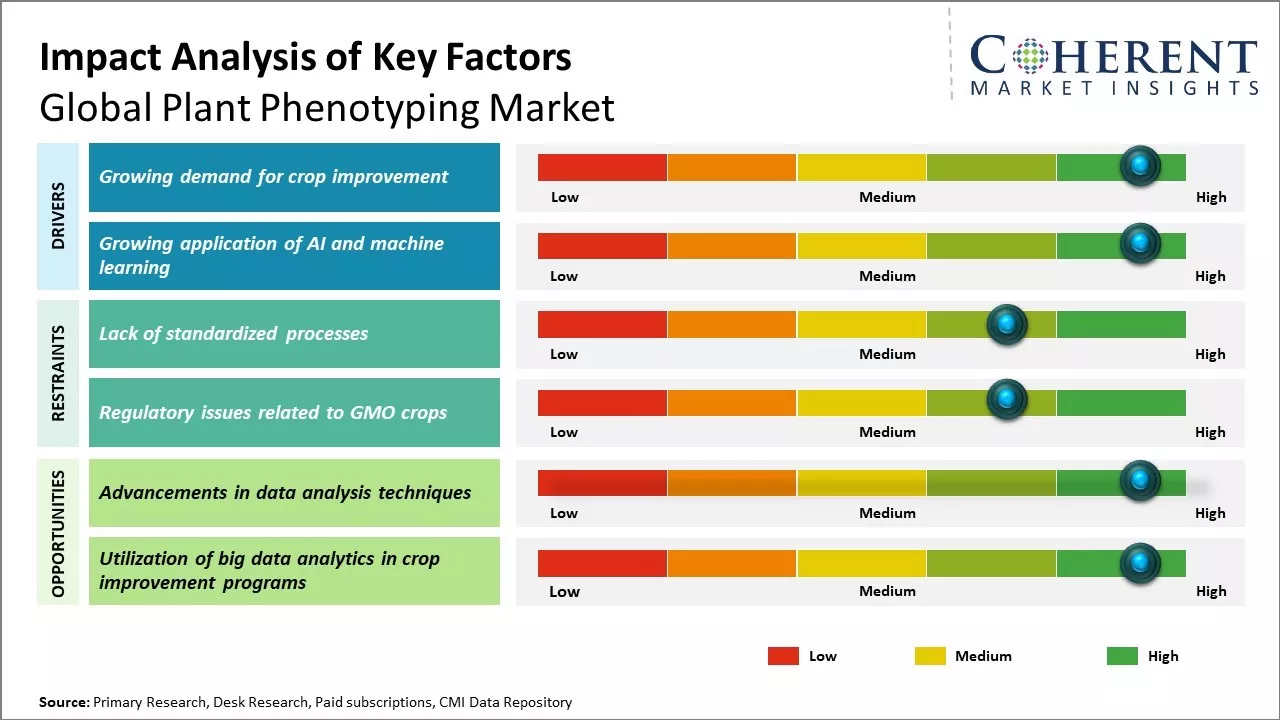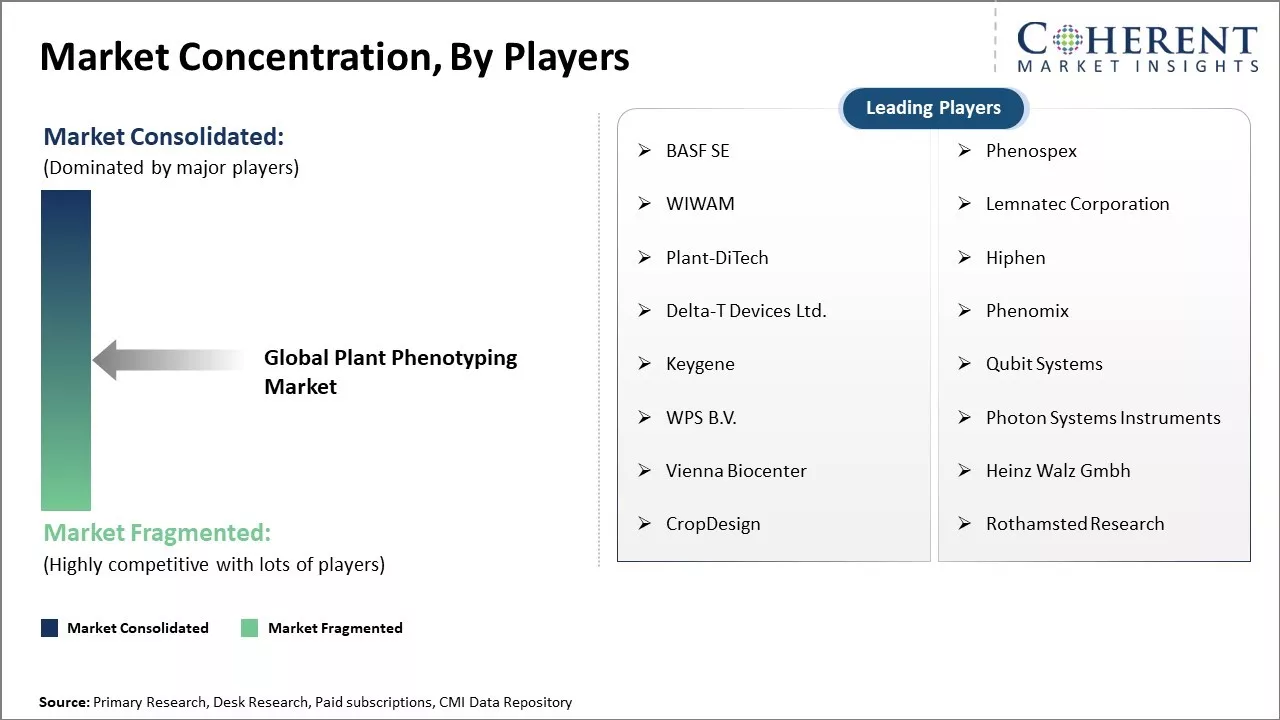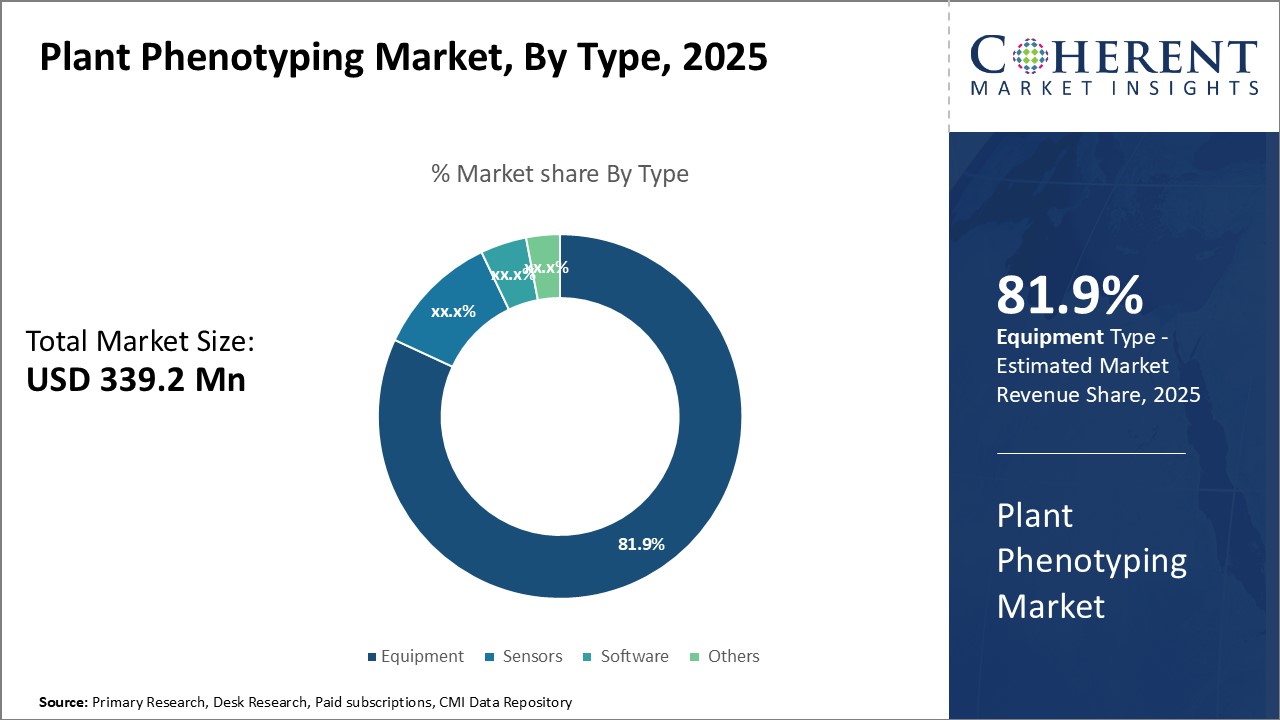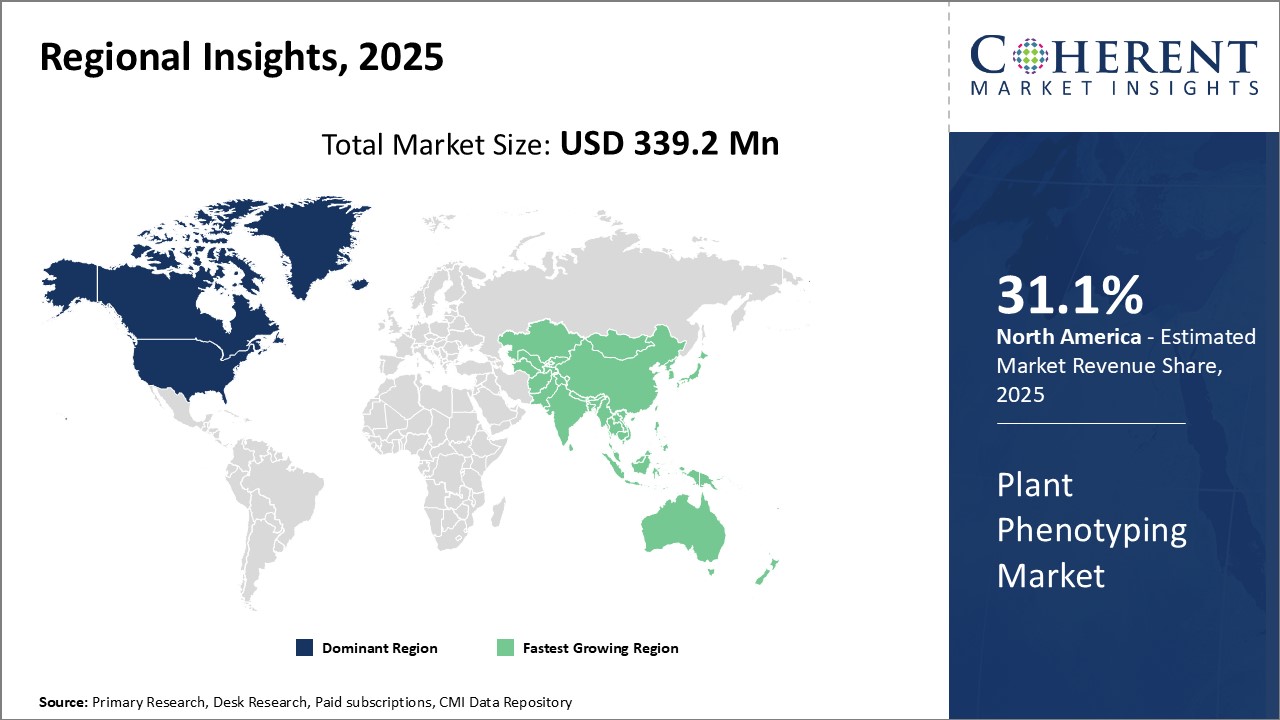The plant phenotyping market is estimated to be valued at USD 339.2 Mn in 2025 and is expected to reach USD 778.9 Mn by 2032, exhibiting a compound annual growth rate (CAGR) of 12.6% from 2025 to 2032.

Discover market dynamics shaping the industry: Download Free Sample
The plant phenotyping market is experiencing positive growth on account of rising demand for crop monitoring and analysis. Plant phenotyping helps in monitoring plant growth over time under different environmental conditions. It further aids in plant breeding programs by the selection of particular traits. With the need to improve crop yields and optimize agricultural production, the deployment of plant phenotyping platforms is increasing globally. This enables traits identification in plants for developing high-yield and climate-resilient varieties. Furthermore, technological advancements in sensor technology, imaging techniques, and data analytics are expanding applications of plant phenotyping. Key players are also investing in the research and development of advanced plant phenotyping solutions to capitalize on market opportunities.
Drivers of the Market:
Growing demand for crop improvement
The shifting climate and need for higher crop yields are driving demand for advancements in plant phenotyping technology. Farmers and agricultural researchers around the world are under increasing pressure to develop varieties of major crops that can perform well with less water and fight off diseases under new climatic conditions. Conventional breeding methods involving cross-pollination and selection are time-consuming and cannot keep up with the pace of climate change and other environmental threats. This is where high-throughput plant phenotyping comes in. By enabling plant scientists to capture comprehensive phenotypic data on thousands of plant varieties and traits rapidly and automatically, phenotyping facilitates more precise selection and acceleration of crop breeding programs. It gives them the ability to evaluate germplasm and develop new varieties that fulfill modern requirements of biotic and abiotic stress tolerance.
More advanced sensors and imaging technologies now available for phenotyping platforms allow analyzing plant material at an unprecedented resolution, from the organ down to the cellular and genetic level. Researchers can capture subtle phenotypes previously unnoticed, supporting the dissection of complex traits and their underlying genetic basis. Such deep phenomics data on stress response mechanisms along with genotype information will prove invaluable for developing climate-ready elite lines through marker-assisted breeding. Several major crop producing countries and research bodies have acknowledged the potential of plant phenotyping to boost crop productivity in a sustainable way. This is reflected in rising investments in phenotyping facilities and ongoing collaborations between private players and public research institutes. The urgent global need for climate-resilient, high-yielding crops thus makes plant phenotyping a research priority, driving continued demand for associated analytical solutions.

Get actionable strategies to beat competition: Download Free Sample
Growing application of AI and machine learning
Another driver propelling the plant phenotyping market forward is the increasing application of artificial intelligence and machine learning technologies. While early automated phenotyping platforms focused on image capture and trait scoring, the focus is now shifting to deploying advanced analytics for extracting even more actionable insights from the vast volumes of phenotypic data. Computer vision and deep learning algorithms are being employed for tasks like comprehending whole-plant architectural features, automating image segmentation and classification, predictive analysis of genotype-phenotype relationships. This helps overcome the bottleneck of manually analyzing petabytes of imagery and phenotype readings generated each season.
AI brings the promise of accelerating discovery from phenomics research manifolds. It allows parsing complex patterns, connecting phenotypes to genotypic or environmental factors that may not be visually evident. Machine learning models can be developed to predict plant performance based on morphological traits observed at seedling stage itself. Researchers are exploring using phenomics and AI together to generate virtual phenotypes under different environmental conditions in silico, before proceeding to costly and time-consuming field trials. As the power and scope of applying automation, predictive analytics and modeling to plant phenotyping expands, it is significantly boosting the potential value it delivers. Many solution providers have started incorporating AI/ML capabilities into their product portfolio, which is expected to make phenotyping an increasingly digitally driven research domain.
Key Takeaways from Analyst:
The plant phenotyping market holds promising growth opportunities over the next decade. Rising demand for higher crop yields to feed the growing global population will be a primary driver. As climate change poses new challenges for agriculture, advanced phenotyping techniques are key to developing more resilient crop varieties. Traits such as drought and pest resistance will be increasingly important, benefiting solution providers. Asia Pacific region dominating the market thanks to strong R&D investment from China, India, and other developing economies looking to boost agricultural productivity through biotechnology.
The market will also face restraints. High initial costs of phenotyping equipment and need for skilled labor may impede adoption rates in price-sensitive developing markets. Data integration and management pose a challenge given the volume of images and readings generated. Lack of standards could stymie data sharing between researchers. Competition is also intensifying as large multinationals enter the space. Furthermore, regulatory hurdles and social acceptance of new traits could slow commercialization of outcomes.
Partnerships between technology providers, seed companies, growers and research institutions will maximize returns on R&D investments. International initiatives involving public-private partnerships are also helping expand global access to phenotyping resources.
Market Challenges: Lack of standardized processes
One of the major challenges for the plant phenotyping market is the lack of standardized processes to collect and analyze plant phenotypic data. While different technologies such as sensors and imaging systems have helped increase throughput of data collection, there are no standardized ways to maintain and record the various experimental protocols and data collection parameters. This has led to issues with reproducibility and comparability of data. Integrating different datasets collected from multiple sources into a common format for analysis has also been difficult. The development of crops suited for varying environmental conditions also requires longitudinal studies involving data collected over several growing cycles. However, without standard operating procedures, it is challenging to correlate datasets accumulated over time. The lack of interoperability between different platforms used for data collection further limits the scope for centralized data analysis. Overcoming these variations by developing community-driven standards can help foster innovation in plant breeding while ensuring quality and reliability of phenotypic data.
Market Opportunities: Advancements in data analysis techniques
The sheer volume of data generated through high-throughput plant phenotyping is opening up new opportunities for leveraging cutting-edge data analysis techniques. Advanced machine learning and deep learning algorithms can help derive meaningful insights and patterns from large phenotypic datasets. When combined with other ’omics’ data, such analytical tools provide opportunities to better understand complex traits at the gene and molecular level. This can help accelerate the process of gene discovery and prediction of appropriate traits. Advanced imaging and computer vision technologies are also helping develop non-destructive evaluation protocols for measuring multiple qualitative and quantitative traits simultaneously. Integrating phenotypic data with environmental and genotypic information in predictive models presents opportunities to develop digital breeding approaches. This has the potential to streamline variety development and ensure suitability of new crop varieties for a changing climate. With ongoing technology advancements, data analysis holds the key to realizing the full potential of high-throughput plant phenotyping.

Discover high revenue pocket segments and roadmap to it: Download Free Sample
Insights by type: Advanced technological capabilities
In terms of type, equipment is expected to contribute 81.9% share of the market in 2025. Within the plant phenotyping market, the equipment segment holds the largest share due to its advanced technological capabilities. A wide variety of equipment is used for high-throughput plant phenotyping including sensors, imaging systems, and processing hardware and software. Imaging systems have seen increased adoption as they enable non-destructive monitoring of plant growth and development over time. Technologies such as hyperspectral, multispectral, thermal imaging, LiDAR and 3D scanning provide insights into physical plant traits and biochemical processes. Advanced imaging capabilities are driving more automated methods for phenotype analysis.
Sensors are also widely employed to collect quantitative data on plant responses to environmental conditions. Sensor-based systems monitor parameters like temperature, light intensity and moisture to track plant performance under different environments. Sensor networks integrated with field deployment equipment help generate massive datasets for analysis. Field deployment equipment has further improved to accommodate high-throughput processing. Conveyor belt systems, automated containers and tracking mechanisms help move large number of plants through phenotyping workflows efficiently. Field deployable cranes and drones aid imaging and sampling of plants in field conditions. Specialized processing hardware and high capacity computing facilities are essential to analyze the immense volumes of complex phenotypic data generated. Advanced algorithms and interactive visualization tools developed by equipment providers facilitate extraction of meaningful insights. Their continual focus on performance enhancement through customization and automation keeps the equipment segment at the forefront of plant phenotyping solutions.
Insights by application: Essential trait evaluation
Photosynthetic performance is expected to contribute 31.7% share of the market in 2025. Among plant phenotyping applications, photosynthetic performance evaluation contributes the highest share due to its importance in essential trait assessment. Photosynthesis is directly linked to crop productivity and yield potential. Detailed analysis of photosynthetic functions provides critical insights into plant stress responses, resource utilization efficiency and adaptation abilities. Traits such as photosynthetic rate, electron transport rate and fluorescence yield parameters are routinely measured using imaging systems during development and under stress conditions. This aids in early screening and selection of genotypes exhibiting optimal photosynthetic traits. Hyperspectral reflectance data collected from imaging sensors is also utilized to estimate biochemical traits linked to photosynthesis like chlorophyll and nitrogen content of leaves non-destructively and at a large scale.
Assessment of photosynthetic performance further helps breeding programs develop crop varieties with enhanced photosynthetic resilience and productivity. Understanding genotype variability in photosynthetic limitations and photoprotection mechanisms guides introgression of beneficial alleles. Phenomic evaluation of photosynthesis is proving instrumental in developing climate-resilient cultivars for sustainable agriculture. Overall, detailed photosynthetic phenotyping enables comprehensive evaluation of a vital plant function and related adaptive traits. Its significance in furthering crop improvement goals sustains high demand for photosynthesis-based applications in plant phenotyping research.

Need a Different Region or Segment? Download Free Sample
North America has established itself as the dominant region in the global plant phenotyping market. With the presence of major players like LemnaTec and Delta-T Devices, North America is expected to account for over 31.1% of the worldwide market share in 2025. The large agriculture industry and government funding for agricultural research have been the major factors contributing to North America's leadership position. Several large universities with deep agricultural research capabilities, such as University of Illinois, also support the regional market growth. Moreover, North American players have established global leadership in terms of technologies, equipment, and software solutions for plant phenotyping. Their products are known to be the gold standard in terms of precision, throughput, and data analytics capabilities.
The Asia Pacific region has emerged as the fastest growing market for plant phenotyping globally in recent years. Countries like China and India with their booming population and growing demand for food are investing heavily in agricultural technologies. The Asia Pacific market is expected to expand at a much faster pace compared to matured Western markets. The presence of a large novice farmer population is encouraging governments as well as private players to focus on the dissemination of new agricultural technologies. China, in particular, has announced massive funding programs aimed at boosting innovation and R&D in sectors like precision agriculture. Several Chinese companies are also actively scouting global acquisitions to gain access to foreign technology and expertise in plant phenotyping and breeding. The low manufacturing costs have enabled regional players to be aggressive on product pricing as well. The Asia Pacific market, led by China, is likely to play a much greater role in the coming years as global spending on agricultural technology continues to accelerate.
Plant Phenotyping Market Report Coverage
| Report Coverage | Details | ||
|---|---|---|---|
| Base Year: | 2024 | Market Size in 2025: | USD 339.2 Mn |
| Historical Data for: | 2020 To 2024 | Forecast Period: | 2025 To 2032 |
| Forecast Period 2025 to 2032 CAGR: | 12.6% | 2032 Value Projection: | USD 778.9 Mn |
| Geographies covered: |
|
||
| Segments covered: |
|
||
| Companies covered: |
BASF SE, Phenospex, WIWAM, Lemnatec Corporation, Plant-DiTech, Hiphen, Delta-T Devices Ltd., Phenomix, Keygene, Qubit Systems, WPS B.V., Photon Systems Instruments, Vienna Biocenter, Heinz Walz Gmbh, CropDesign, and Rothamsted Research |
||
| Growth Drivers: |
|
||
| Restraints & Challenges: |
|
||
Uncover macros and micros vetted on 75+ parameters: Get instant access to report
*Definition: The plant phenotyping market involves products and technologies used to study the physical appearance and development of plants. These tools are used by plant biologists and breeders to more efficiently analyze plant traits like growth habit, flowering time, morphology, herbicide resistance, and biotic/abiotic stress tolerances. Plant phenotyping systems use imaging technologies, hyperspectral cameras, 3D imaging, customized growth chambers, and software to capture large amounts of quantitative data on plant phenotypes under different environmental conditions. This helps advance research in plant genomics, breeding, and agriculture.
Share
Share
About Author
Vidyesh Swar is a seasoned Consultant with a diverse background in market research and business consulting. With over 6 years of experience, Vidyesh has established a strong reputation for his proficiency in market estimations, supplier landscape analysis, and market share assessments for tailored research solution. Using his deep industry knowledge and analytical skills, he provides valuable insights and strategic recommendations, enabling clients to make informed decisions and navigate complex business landscapes.
Missing comfort of reading report in your local language? Find your preferred language :
Transform your Strategy with Exclusive Trending Reports :
Frequently Asked Questions
Joining thousands of companies around the world committed to making the Excellent Business Solutions.
View All Our Clients